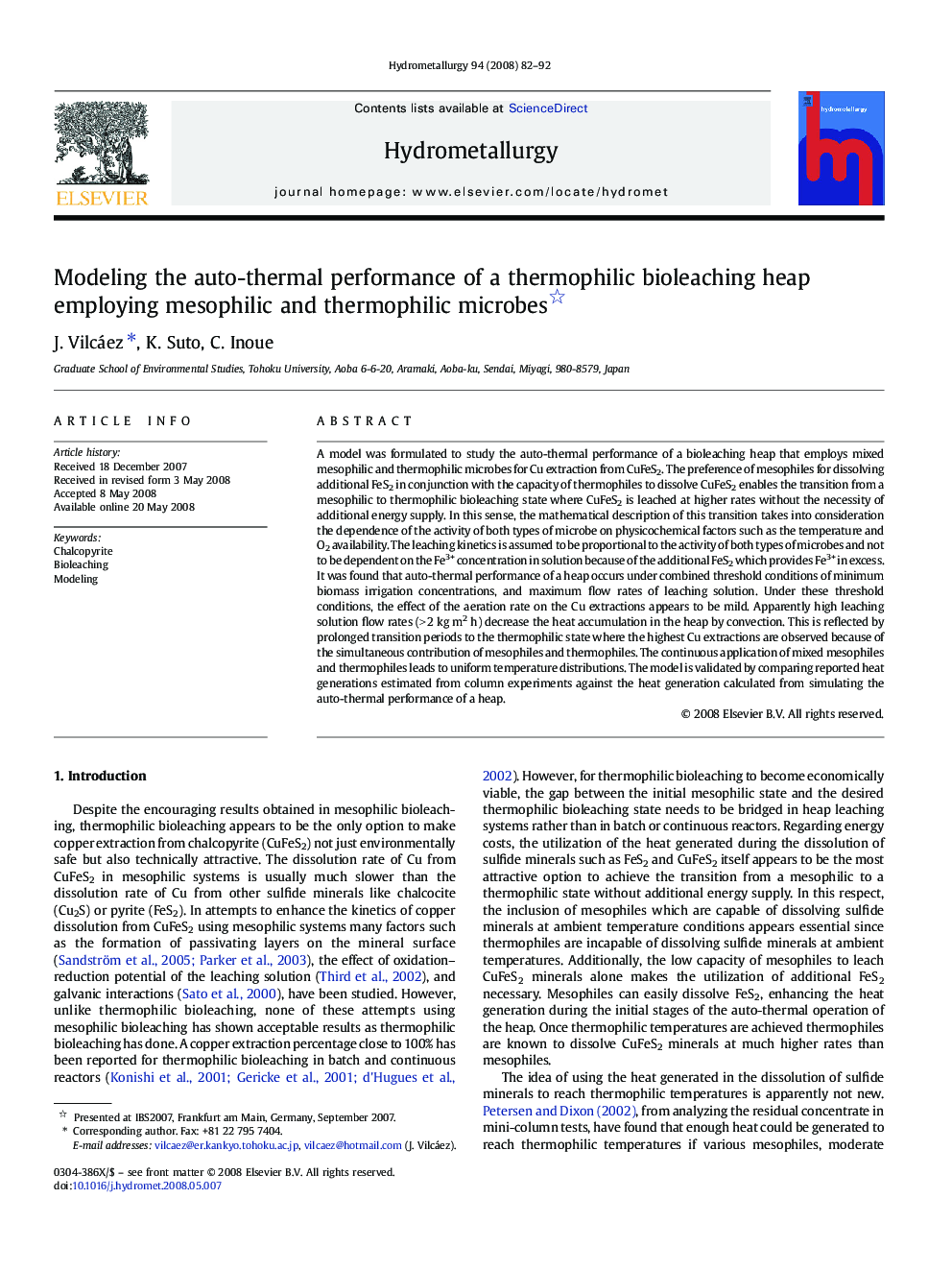| کد مقاله | کد نشریه | سال انتشار | مقاله انگلیسی | نسخه تمام متن |
|---|---|---|---|---|
| 213220 | 462088 | 2008 | 11 صفحه PDF | دانلود رایگان |

A model was formulated to study the auto-thermal performance of a bioleaching heap that employs mixed mesophilic and thermophilic microbes for Cu extraction from CuFeS2. The preference of mesophiles for dissolving additional FeS2 in conjunction with the capacity of thermophiles to dissolve CuFeS2 enables the transition from a mesophilic to thermophilic bioleaching state where CuFeS2 is leached at higher rates without the necessity of additional energy supply. In this sense, the mathematical description of this transition takes into consideration the dependence of the activity of both types of microbe on physicochemical factors such as the temperature and O2 availability. The leaching kinetics is assumed to be proportional to the activity of both types of microbes and not to be dependent on the Fe3+ concentration in solution because of the additional FeS2 which provides Fe3+ in excess. It was found that auto-thermal performance of a heap occurs under combined threshold conditions of minimum biomass irrigation concentrations, and maximum flow rates of leaching solution. Under these threshold conditions, the effect of the aeration rate on the Cu extractions appears to be mild. Apparently high leaching solution flow rates (> 2 kg m2 h) decrease the heat accumulation in the heap by convection. This is reflected by prolonged transition periods to the thermophilic state where the highest Cu extractions are observed because of the simultaneous contribution of mesophiles and thermophiles. The continuous application of mixed mesophiles and thermophiles leads to uniform temperature distributions. The model is validated by comparing reported heat generations estimated from column experiments against the heat generation calculated from simulating the auto-thermal performance of a heap.
Journal: Hydrometallurgy - Volume 94, Issues 1–4, November 2008, Pages 82–92